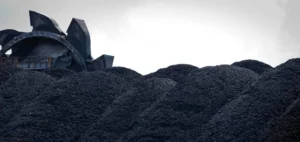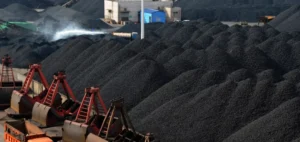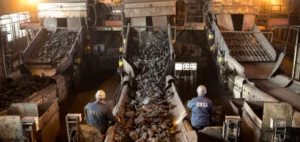Australia, one of the world’s leading coal exporters and so far the worst performer in environmental protection, shut down its oldest coal-fired power plant on Friday and is preparing for a dramatic shift to renewable energy.
The Liddell power plant, located about three hours north of Sydney, is one of a series of aging coal-fired plants scheduled to close in the coming years. Built in 1971, Liddell supplied about 10% of the electricity consumed in New South Wales, the most populous state in Australia. It will take two years to destroy, says its operator, AGL, which says the site can then be used for a clean energy project, such as a hydrogen power plant. “More than 90% of the plant’s materials will be recycled, including 70,000 tons of steel, which is more steel than the Sydney Harbour Bridge,” the public company points out.
A fairly rapid phase-out
For decades, coal provided the bulk of Australia’s electricity, but plants like Liddell’s quickly became unreliable “wrecks,” Mark Diesendorf, a renewable energy expert at the University of New South Wales, tells AFP. Inefficient, polluting and costly to maintain, these coal-fired power plants would run counter to Australia’s climate goals if they continued to be used. Australia has long been one of the world’s largest producers and exporters of coal and, over the course of governments, has resisted pressure to reduce activity in this sector.
But the center-left government, elected last year on the promise of climate action, has pledged that 82% of Australia’s electricity will come from renewable sources by 2030. This is a radical change: while top performers such as Norway produce over 90% of their electricity from renewable sources, Australia currently produces only about 30%. “The plans call for a fairly rapid phase-out,” Diesendorf continued. “These plants should have already been shut down and there is no economic argument for replacing them with new coal plants.”
On the right track
Under increasing public pressure, many Australian fossil fuel companies are shutting down old coal-fired power plants rather than keeping them running. Liddell was originally scheduled to close in 2022, but AGL says it has kept it running until April to ensure “system reliability.” Australia’s largest coal-fired power station, Eraring in New South Wales, is scheduled to close in 2025, with a handful more to follow over the next decade.
The closures will test whether renewables can bridge the gap, climate finance expert Tim Buckley tells AFP. A government report released Friday indicates that Australia is on the right track. The Australian Energy Market Operator has found that record levels of renewable electricity generation — primarily solar power — are already driving down emissions and household electricity prices. Because Australia, bathed in sunshine and with sparsely populated, windswept coastlines, has all the natural ingredients to become a renewable energy superpower, according to Buckley.
“Contradiction”
For the expert, the most difficult thing will be to find a way to store this energy and transport it over the vast distances that separate Australian cities. “The chances of everything going right by 2030 are close to zero,” he admits. Even if this goes well, Australia faces enormous challenges in achieving its goal of net zero emissions by 2050. Over the past decade, a “climate war” has dominated Australian politics, repeatedly undermining attempts to reduce carbon emissions.
In 2020, researchers found that 8% of Australians denied the existence of climate change, more than double the global average. Transport accounts for 19% of Australia’s emissions, one of the only advanced economies without energy efficiency standards, which the government has pledged to rectify soon. While Australia is focusing on renewables for its domestic market, it continues to rely on fossil fuels to boost its export economy: dozens of new coal mines, oil fields and gas projects are in the planning stages. “By continuing to develop gas fields and coal mines for export, we are terribly behind,” Diesendorf believes. “It’s a real contradiction.”






















